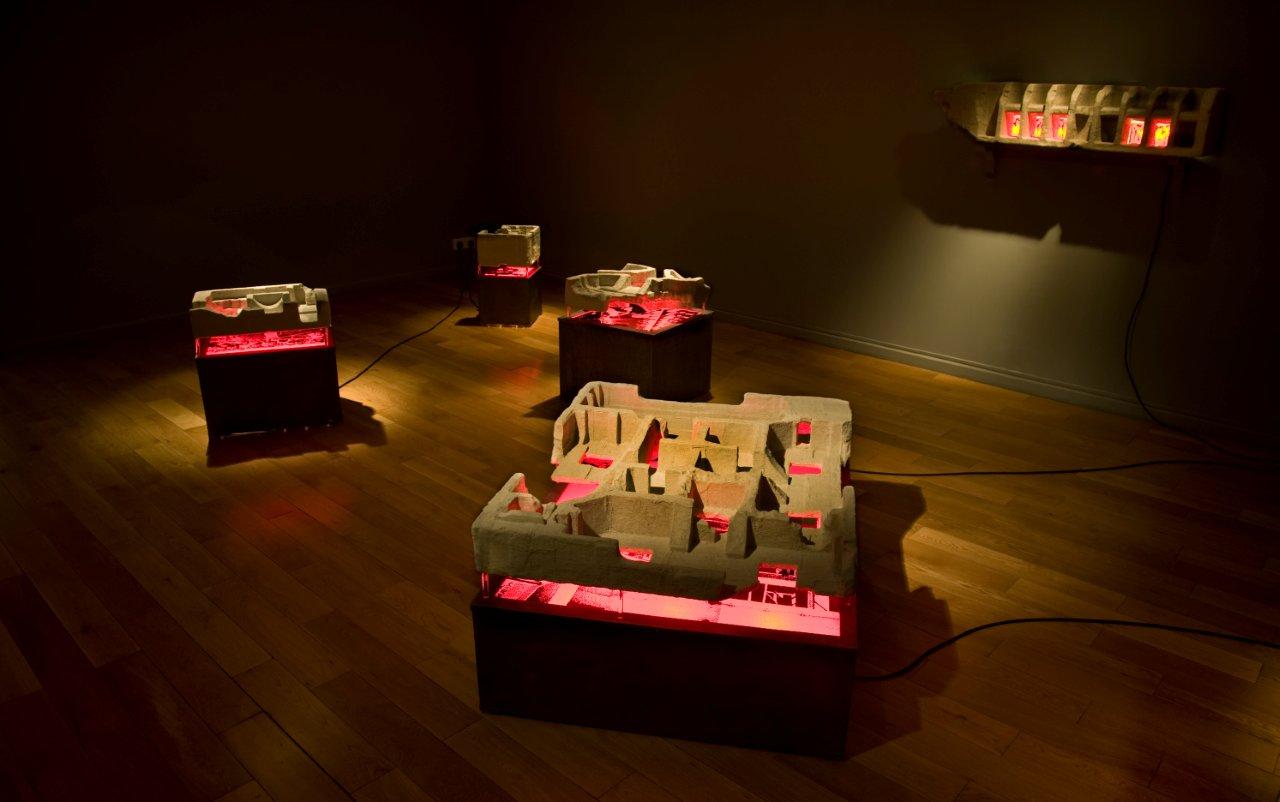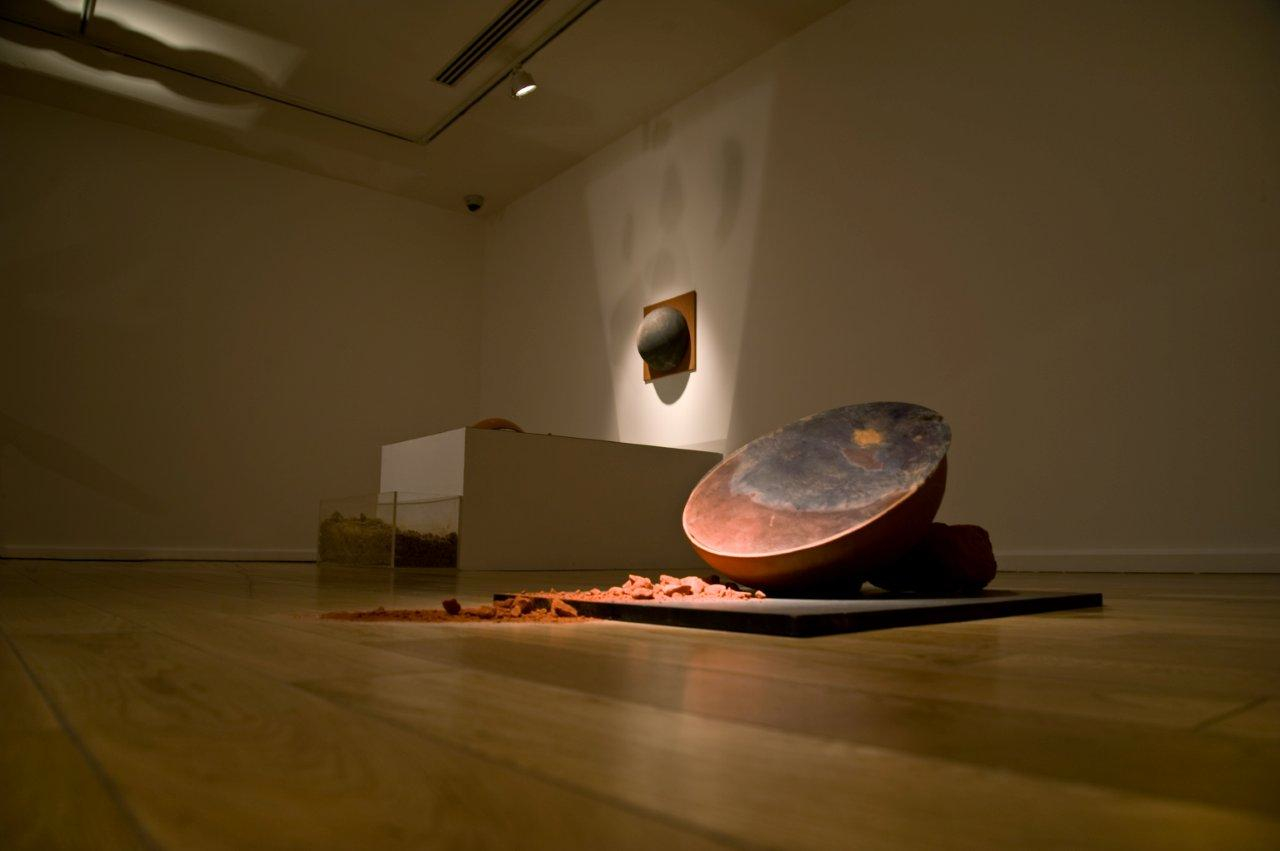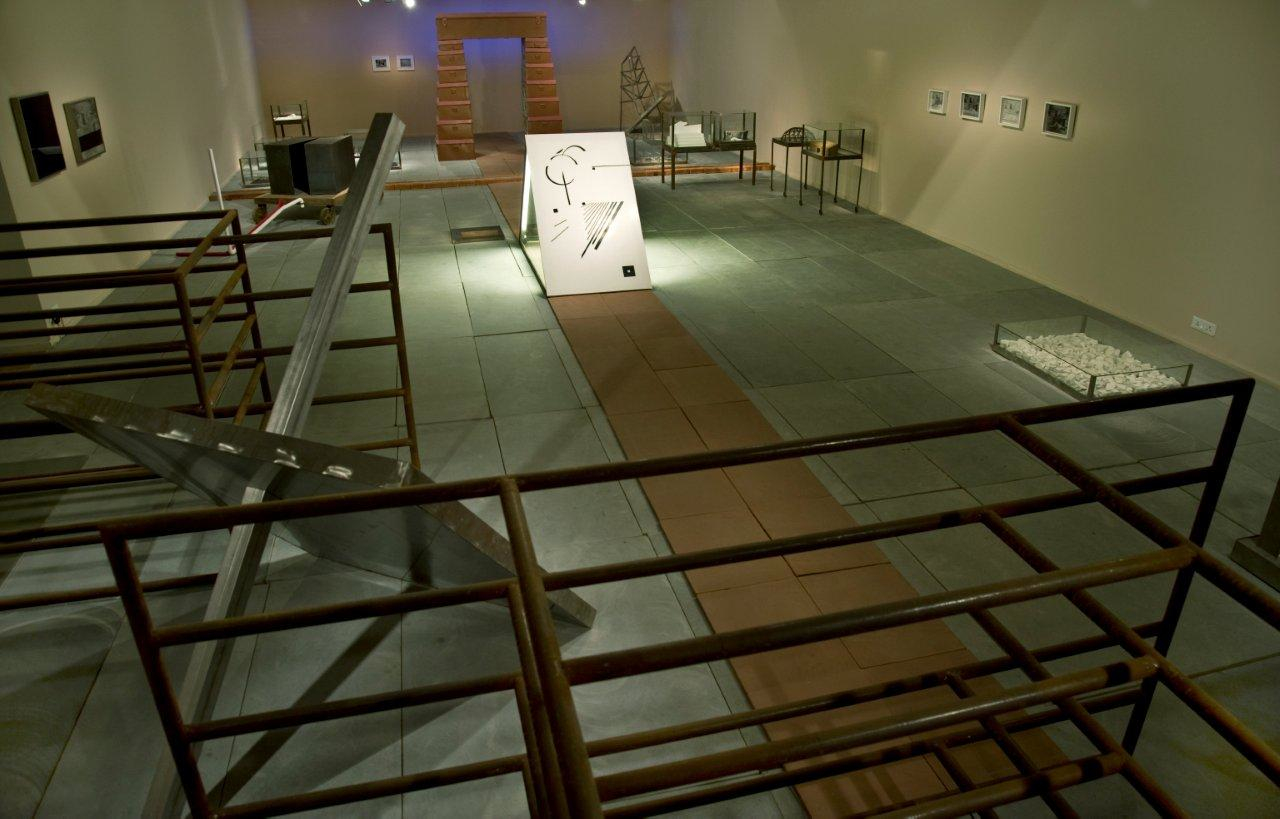n my first studio visit of the series, I met Shivani Aggarwal at her studio in Delhi's Sukhdev Vihar colony. Her work had interested me for the sensitivity with which she approached issues of women's domesticity, their desires and their suffering. Emblematic of her practice is her use of thread, tangled yarns of which are wound and unwound, clumped uselessly or knitted profusely on canvas and in sculpture. They are a telling reminder of the roles a woman enacts, pandering to the expectations of her family, society and religion, as well as her own ambitions. The works are in part a celebration of womanhood — the joy of caring and comforting — and in part a protest against gender biases. Aggarwal reveals that while completing her Master's degree in England, the distance from her homeland and all that was familiar made her focus more on her "self". This introspection led her to begin knitting stories on her body, photographing her hands, feet and torso adorned with delicate decorations of thread and wool, insinuating the fabric we wear and hide behind. The knitted, the half-knit and the yet-to-be-knit lay bare the fragility of relationships that often outgrow their function and in doing so deem the performance of instrument or person useless.
Her most iconic reference of the needle comes from memories of unintended hurt, inflicted and suffered by her or others around her. She suggests these instruments are symptomatic of unresolved issues. On being asked if she considered herself a feminist, she shyly replies that she is not aggressively so, yet her works do carry an underlying gripe against women's treatment as the second gender. She further admits her exhaustion from the repetition of performing daily chores of nurturing and mending, which she conveys in the making of multiple images and repetition of the same elements over and over. Like pieces of a puzzle, her imagery often overlaps from one canvas onto another, making sense only when "stitched together" as an installation of many. The artist's deliberate choice of red-coloured thread draws inference to violence and anger besides simulating blood vessels that nurture and sustain our being. Her clever play with scale ensures that the sharp critique of the small sized is inversed by the absurdity of the oversized.
Her most iconic reference of the needle comes from memories of unintended hurt, inflicted and suffered by her or others around her. On being asked if she considered herself a feminist, she shyly replies that she is not aggressively so, yet her works do carry an underlying gripe against women’s treatment as the second gender.





More recently, Aggarwal has dabbled in a performance video that shows her sewing a rose, a poetic narration of a futile attempt at repairing something that needs it not, eventually destroying it completely. The video is played on loop, emphasising the undoing of things that are naturally beautiful, their resistance to our interventions and their repeated unbecoming as a cyclic drama.
The English vocabulary uses numerous metaphors — threading a needle, tying the knot, a needle in a haystack, a stitch in time saves nine and the like — all of which ran through my head while I viewed her works, all of which were intended references. For a long time now, girls have been taught to cook and sew in preparation of them running households of their own and being able to care for a family. Tasks that Aggarwal confesses to have not been trained in, yet she finds the medium appropriate for conveying her angst.
The artist has scarcely shown in Delhi, except for a solo booth at the India Art Fair and in a few group exhibitions, but I'd sure like to see more of her work as her practice evolves.


